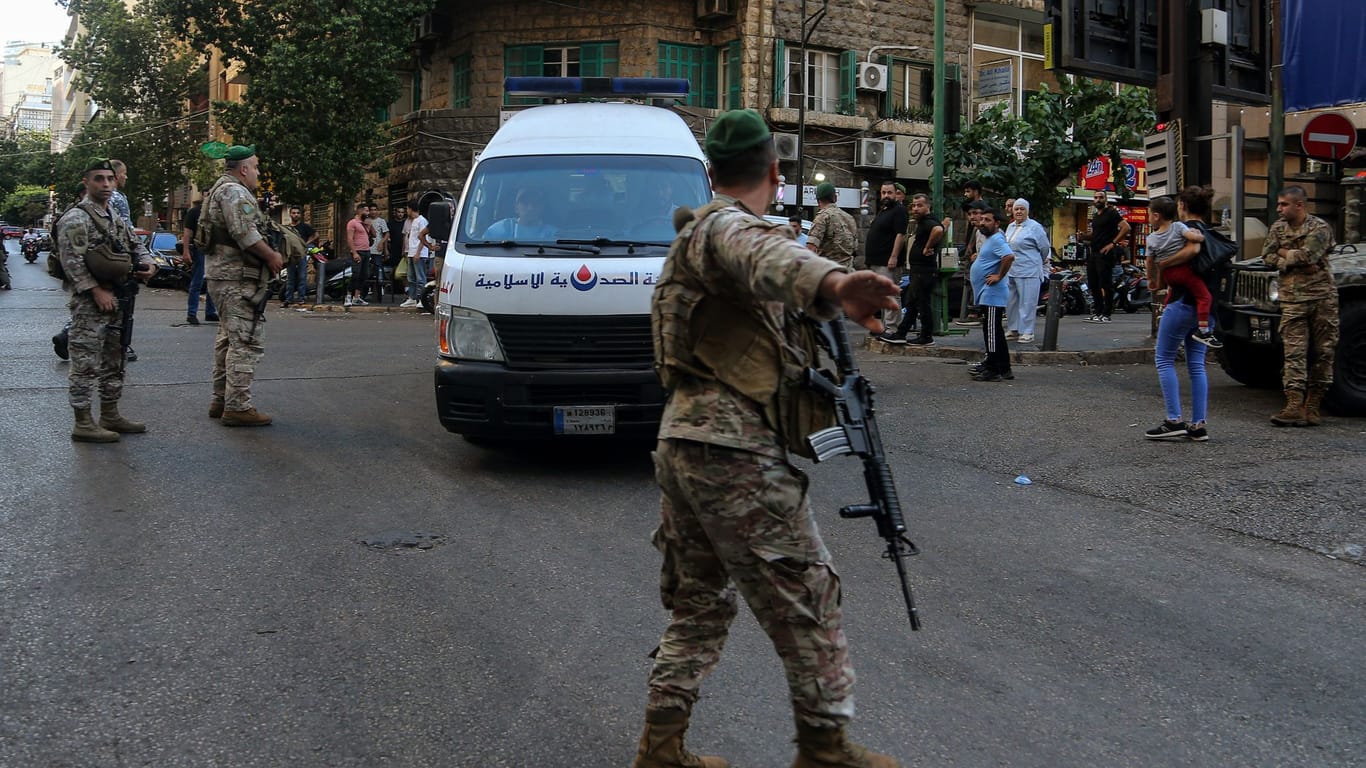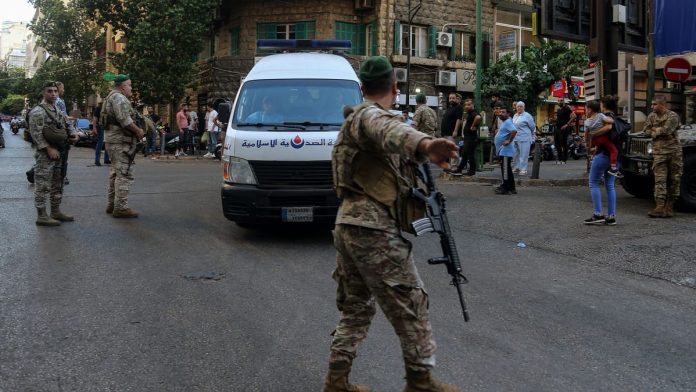Middle East
Explosions in Lebanon: What we know and what we don’t
Updated on 18.09.2024Reading time: 3 min.

In Lebanon, hundreds of small radio receivers explode simultaneously. Hezbollah blames Israel for the attack. Then a second wave of explosions follows. What is known so far.
As a result of the simultaneous explosion of hundreds of so-called pagers on Tuesday, around 2,800 people have been injured in Lebanon and at least twelve people have died. Many of the injured are said to be Hezbollah fighters, including members of the elite Radwan force. The pro-Iranian Shiite militia blamed Israel and threatened retaliation. A second wave of explosions followed the next day, with 300 injured and nine dead. Many questions remain unanswered.
The devices: In the first incident, pagers bearing the Gold Apollo logo exploded. The Taiwan-based brand denied any connection to the incident. According to board member Hsu Ching-Kuang, the devices simply bore the company's logo and were not manufactured by his company in Taiwan. When asked, Gold Apollo explained that a company based in Hungary had designed and manufactured the radio devices. The AR-924 model mentioned in media reports is also produced and sold by BAC. The Hungarian company BAC Consulting denies this, however. It was initially unclear which devices were affected on the second day, but Hezbollah spoke of “walkie-talkies”, i.e. classic radio devices.
The use of pagers: Experts assume that pagers were an important communication system for Hezbollah. The militia switched from cell phones to them for security reasons – among other things because pagers cannot be used to determine a person's location. This – so the logic goes – would also make them less vulnerable to surveillance or electronic warfare attacks. Hezbollah leader Hassan Nasrallah has warned his followers several times against using smartphones. In February, he called on his fighters to throw away their smartphones.
The aim of the attack: There is speculation that Israel may have deliberately detonated the devices as an attack on Hezbollah fighters. High-ranking Hezbollah officials were also injured, a source close to the militia confirmed. Explosions were reported throughout the country, especially in the areas controlled by Hezbollah. At the same time, civilians were also affected by the consequences – according to the government, two children were among the dead in the first wave.
The time of the attack: According to local media reports, hundreds of radio receivers detonated simultaneously at 3:30 p.m. local time. Videos from surveillance cameras with these time stamps are also circulating on social media. On the second day, information was initially sparse.
The number of dead and injured: According to the Lebanese Ministry of Health, at least 12 people were killed and around 2,800 others injured on Tuesday. Around 300 of the injured were in critical condition. Among the fatalities were an eight-year-old girl and an eleven-year-old boy. 460 of the injured had to undergo eye or facial surgery. In some cases, doctors also had to remove arms or fingers. With around 1,850 injured, most of the victims came from Beirut and the surrounding area. It remained unclear how many of the victims were civilians or members of the Hezbollah militia. Iran has sent the first aid teams. On the second day, according to authorities, around 300 people were injured and nine people were killed.
Israel's reaction: Israel's army has increased its state of alert. In anticipation of a possible reaction from Hezbollah, Israel's air defense, air force and military intelligence have been put on high alert, reported the Israeli army broadcaster. An elite division is also to be relocated from the Gaza Strip to the border with Lebanon as part of the heightened tensions. The UN in New York, however, said that a larger Israeli attack was now expected, and that the explosions may have only been the prelude to one.
The background and masterminds: So far, no one has claimed responsibility for the attacks. Hezbollah and its close ally, Iran, blame Israel and its secret service, Mossad, for the explosions. As in other cases before, Israel has not yet made a public statement.
The procedure: How and where the pagers were manipulated is still largely a matter of speculation. Some media reports assume that the radio receivers were probably intercepted by Israeli agents before they were delivered to Lebanon and prepared with explosives. Even less is known about the devices that exploded on Wednesday.
The victims in the Hezbollah leadership: There is no precise information yet as to whether the victims include members of the Hezbollah leadership. Hezbollah leader Nasrallah has announced a speech for Thursday. Observers therefore assume that he is most likely fine. He lives in hiding. It is assumed that he does not have any technical devices with him. However, according to Lebanese security sources, two of his bodyguards are said to have been injured.



